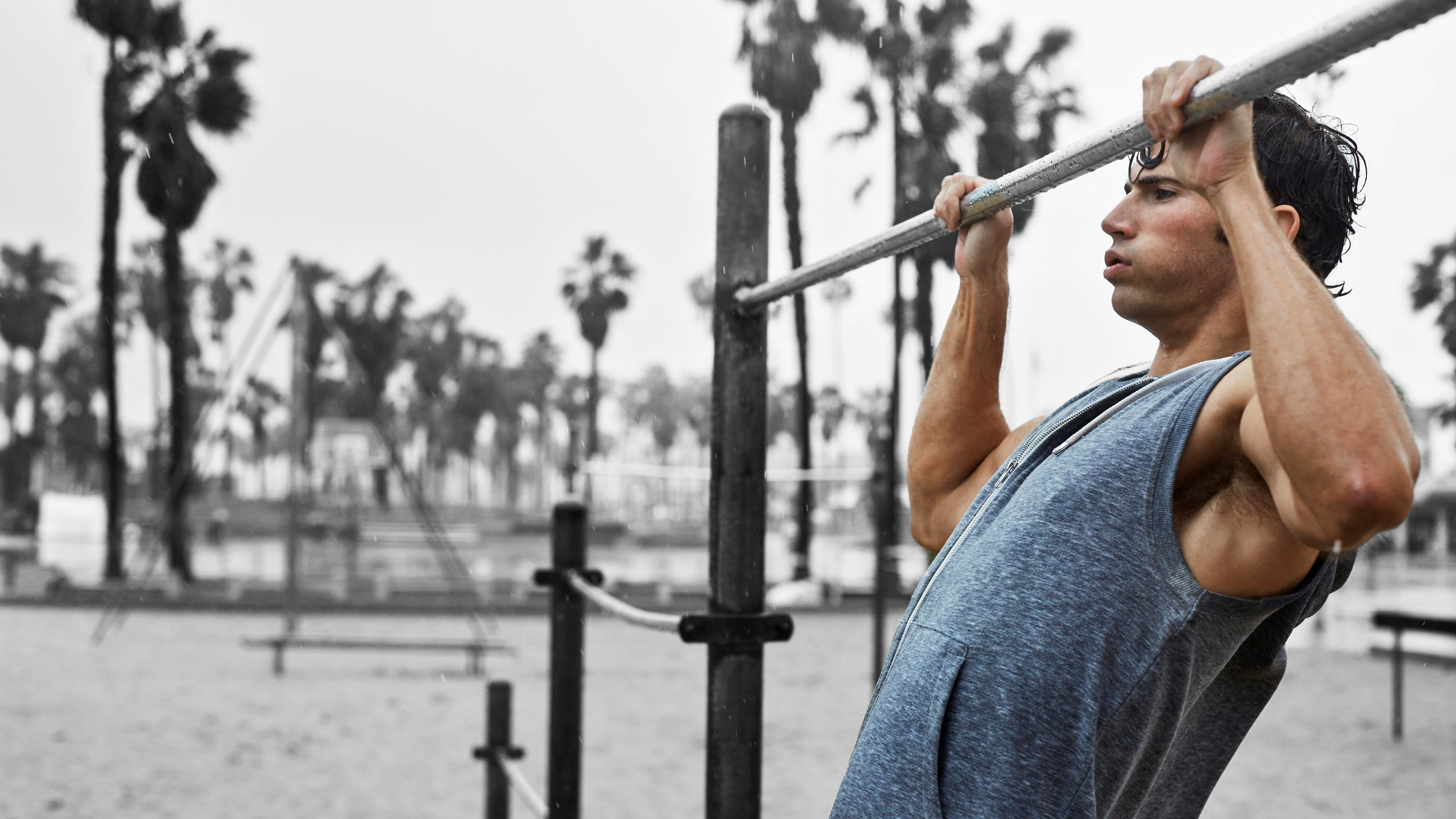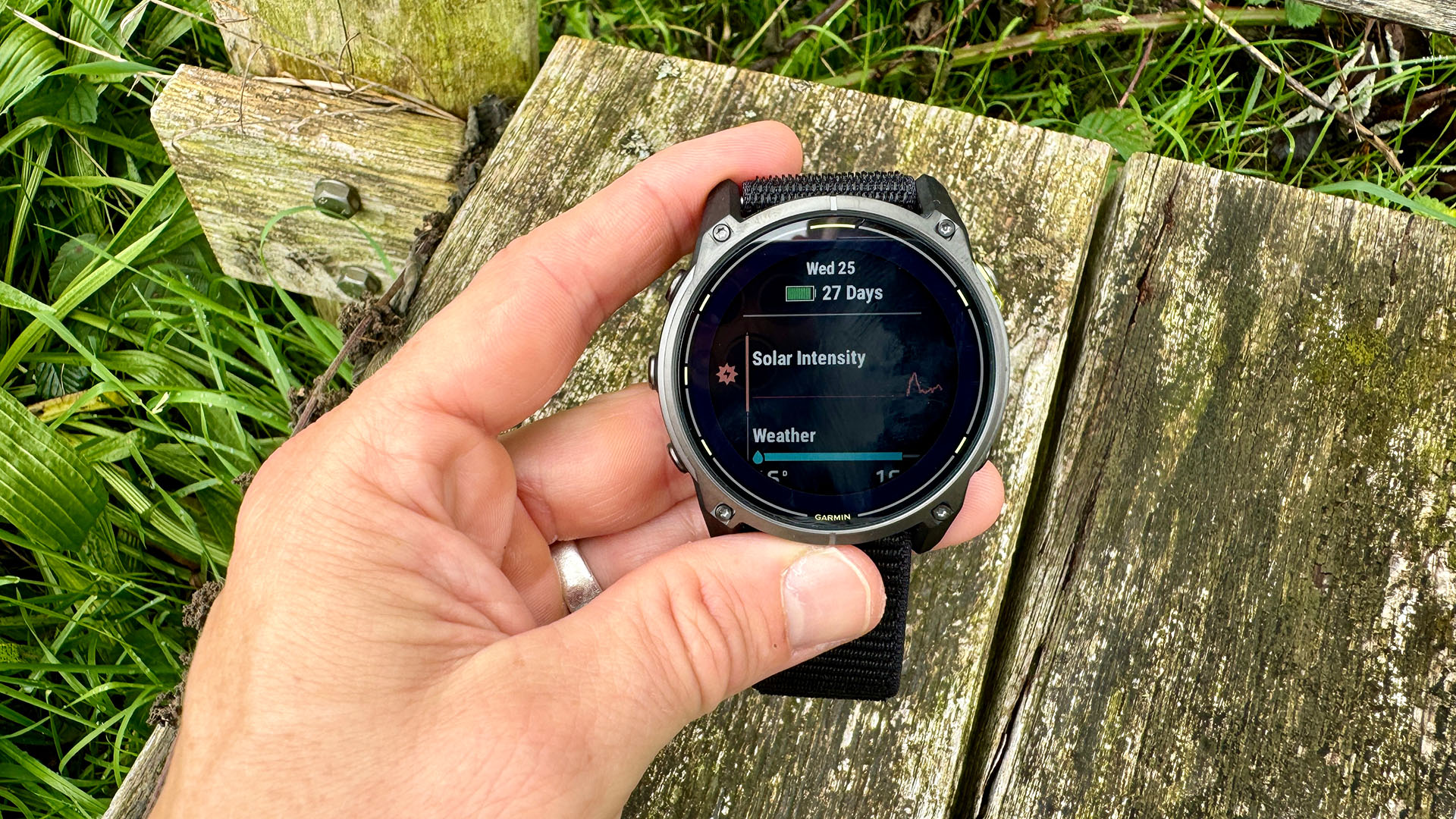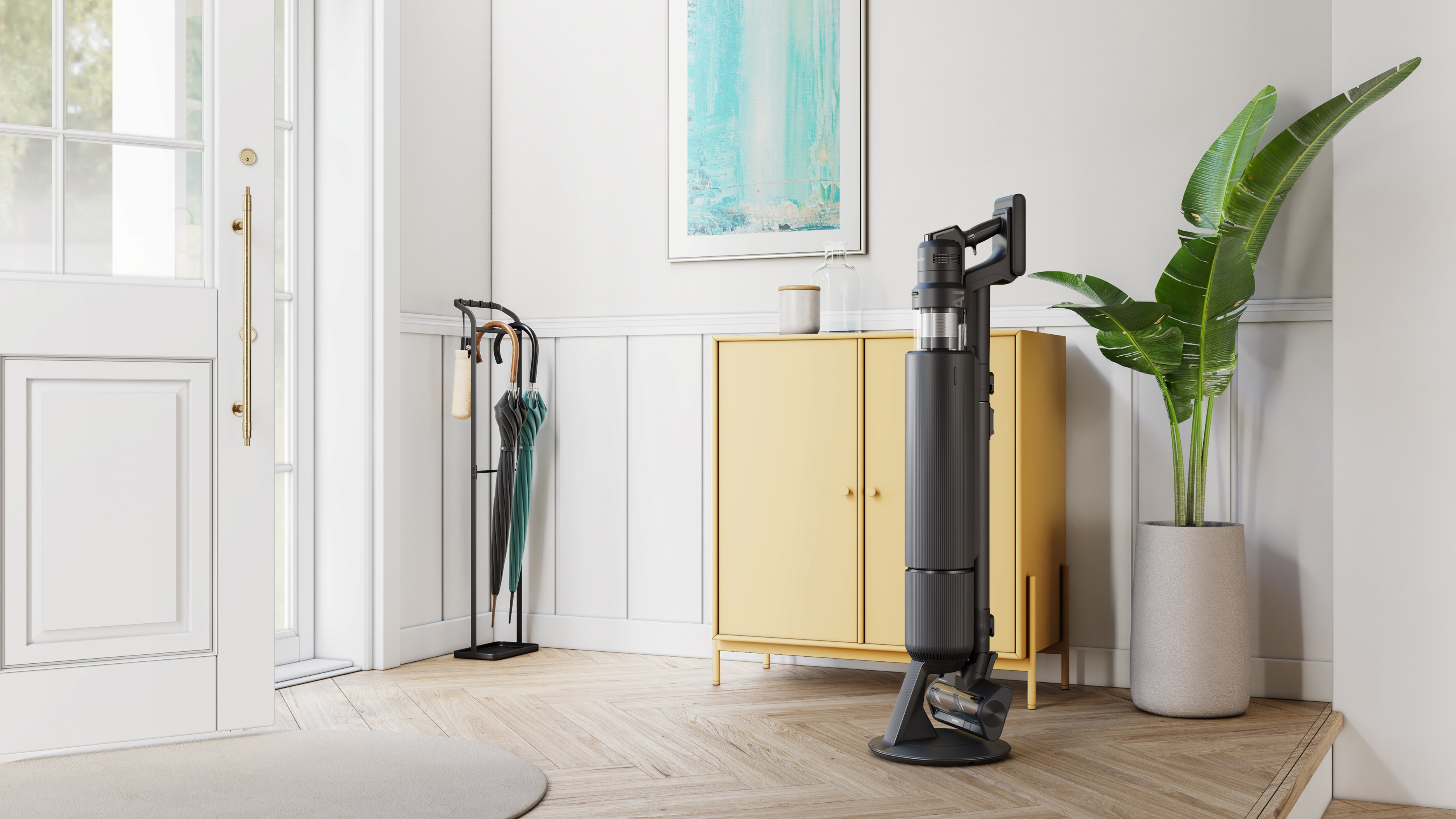

'Who in their right mind would want to do 100 pull-ups a day for a full week?' That was the question I should have asked myself before attempting this home workout challenge. Alas, as always, instead of rationally thinking things through, I just went for it, right after I returned from my holiday in English-seaside-town-turned-watery-art-emporium, Margate. I have no regrets, though, as I'm thrilled I completed the challenge: I have never felt as strong as I do now, 700 pull-ups later.
Don't know how to do pull-ups? Click on the link to learn how to master the King of Upper Body Exercises.
There are reasons why I wanted to do the 100 pull-ups a day for a week challenge, the main one being that I still can't do muscle-ups (muscle-up involves pulling yourself up on the bar, then pushing up and over it). It's a little like getting out of a swimming pool, but without the assistance of water. Whatever you compare them to, muscle ups are notoriously complex and require explosive power – something I couldn't acquire by just doing a few sets of pull-ups a week.
No, to tackle muscle-ups, I needed to go all-in, forcing my muscles to adapt and build strength by completely overloading them. The process wasn't easy, and I must admit, I wouldn't recommend it to people who aren't sure about their strength to start with. I like a good old workout challenge, hence why I did the 10,000-swing kettlebell challenge, but when you bomb certain muscle groups so intensely, you must be fully aware of what you're doing and how you work out.
That said, apart from the very beginner level, I think almost everyone would benefit from following the 'lumberjack method', an approach I will explain later. What was it like to do pull-ups for 13 hours a day? Can doing eight pull-ups an hour make a difference? How did I tackle muscle soreness? Would I do the pull-up challenge again? Or any workout challenge, for that matter?
Read on to find out.
100 pull-ups a day for a week workout challenge: the home gym equipment you'll need
Obviously, you'll need a pull-up bar to perform pull-ups. Although there are many parks in cities that have workout areas where you can do pull-ups, given that you will need to do pull-ups all day, getting a pull-up bar or a power rack would be a better option. For more inspiration, please look at our best pull up bar and best power rack guides.
Sign up to the T3 newsletter for smarter living straight to your inbox
Get all the latest news, reviews, deals and buying guides on gorgeous tech, home and active products from the T3 experts
Apart from a pull-up bar, you might need some resistance bands, especially if you're not too experienced with doing pull-ups. Resistance bands can make pull-ups easier, as explained in this video. For those who aren't keen on having blisters on their hands, wearing gym gloves might be a good option.
Apart from that, you'll need two more things: time and a whole lot of resilience.
For the record, I was doing wide grip pull-ups, not chin-ups. If you don't know the difference, read this explainer article: chin up vs pull up.
100 pull-ups a day for a week workout challenge: how many pull should you do at a time?
I did eight pull-ups per set because that's the number of pull-ups I can do without compromising on form. I would like to say that's the number of strict pull-ups I can do but it's more like that I can do eight pull-ups that resemble strict pull-ups.
Strict pull-ups start from a hanging position (shoulders disengaged), followed by pulling yourself up on the bar until your chin is over the bar, then lowering yourself back down to the starting position. There is no kipping or any other techniques involved that might add kinetic energy to the motion.
As it turns out, my form wasn't 100% correct at the beginning and it improved a lot by the end of the week-long pull-up challenge. Another reason to try it out.

100 pull-ups a day for a week workout challenge: the process
It would take forever to recap the whole week as it went so instead, I'll recap the highlights from each day.
Day 1 went relatively quickly. Just like in the case of any workout challenge, my body was fresh on the first day so doing eight pull-ups every hour didn't seem much of a challenge. As a matter of fact, I wondered if it'll make any difference if I didn't do 100 pull-ups as fast as I could every day. How wrong this assumption was! Did my last set around 8:30 pm after starting at 7:00 am in the morning, quite a long day overall. Pull-ups completed: 96
Woke up on Day 2 with sore lats, pecs and triceps: ouch. My palms were also getting blistery and sore so I struggled to find a grip that didn't make my skin want to detach itself from my palms. Halfway through the day (at around the 50 pull up mark), I felt like there was a lot of pull-ups to do still, felt tired and exhausted. I went as far as icing my hands in the evening to ease the soreness and ended up doing my last set of pull-ups for the day at 9:00 pm: not great. Pull-ups completed: 88
On Day 3, the lower parts of my lats were mega sore and I had loads to do so I decided to give myself a bit of a break from the challenge. Instead, I did a monster pecs workout to use the muscles I don't need for the challenge a bit. To be continued? Pull-ups completed: 0
Day 4 came and I felt ready to resume the challenge. Started my first set early in the morning (around 7 am) and my hands were okay and refreshed. Although I was ahead of schedule at the beginning of the day, I kept on doing each set a bit later, resulting in me finishing the pull-ups an hour later than planned, at around 8 pm. I was considering timing my sets so I don't fall behind too much as the day progresses. Pull-ups completed: 104

Lat soreness was under control by the end of Day 5 and it also felt like my form was improving: I could pull myself up more efficiently from the hanging position, even after I disengaged my shoulders completely. I started setting alarms on the watch to remind me of the set times, which was perfect as I was also testing the Casio G-SHOCK GSW-H1000 watch which has a timer function. Perfect. Pull-ups completed: 104
I slept terrible on the fifth night (completely unrelated to the pull-up challenge) so I wasn't all fired up for having to do another 100 pull-ups on Day 6. I also had a law exam so had to do sets more frequently during the afternoon to catch up a bit. That said, I felt like I could pull myself up even easier from the lowest point of the pull-up, even during sessions later on the day, when my muscles were more exhausted. Better still, I managed to finish the day early as I did a set every half an hour in the afternoon. Pull-ups completed: 104
On Day 7, sets were a bit less frequent as I had loads of work to do but I still tried to time myself as much as possible. My palms started hurting again but overall, doing pull-ups every half an hour became a habit and whenever the watch buzzed, I got up from my desk, did my pull-ups and went back to writing. Finished the sets halfway through the afternoon: all in the day's work!

Building strength: the lumberjack method
You might assume that a challenge like this would get progressively harder as the week went on. However, it's actually the opposite that happens.
How? People are often told that in order to build muscle, they must use a progressive overload method and gradually increase workout volume in order to stimulate muscle growth. And while it's all true, this doesn't mean that there are no other ways to progress, especially if you want to build strength and not mass.
When you think of a lumberjack, what image pops into mind? A big burly man with wide huge arms and a big chest, sporting a checked shirt, right? And while they always look rather muscular, they probably never bothered with following a progressive overload pattern.
The truth is, you can build muscle in a variety of ways. People who have physically demanding jobs tend to be more muscular mainly because they use their muscles a lot so they adapt to the increased workload by getting bigger. Modern bodybuilding workouts try to replicate this but in a much shorter time frame, hence why they need to be so specific.
At the end of the day, the more you use your muscles, the stronger they get. As long as you eat your protein (whether it's protein shakes, protein bars or lean meats) and give your muscles at least some time to recover (a good sleep is very important), you can work out to your heart's content.
And since our bodies are infinitely adaptable, by doing loads of pull-ups every day, it will quickly realise it needs to go muscle in order to keep up with the demand. You will feel the strength increase sooner than seeing the actual muscle growth but it will come eventually.

100 pull-ups a day for a week workout challenge: why would anyone do this challenge?
- You want to get better at pull ups: by doing loads of pull ups, you'll get better at pull ups, obviously. It's like saying that drawing more will help
- Want to get out of a workout rut: if you're stuck in your workout progress, switching things up could help you get out of the rut. Overloading the muscles might just help you be the thing that help you move forward.
- Want to get stronger to do more advanced exercises (e.g. muscle ups): my reason to start this workout was to get stronger and although I'm not quite there yet, I feel stronger and more confident about pull ups than ever before.
- Enjoy a challenge: some people might do this workout challenge for the sake of it. In order to complete so many pull ups in one week, you will have to get out of your comfort zone .
100 pull-ups a day for a week workout challenge: takeaways and tips
Although I have been working out forever at this point, I learned a lot from doing this pull up challenge. Some of these learnings are reiterations of things I already knew while others are something I've just realised during this challenge.
One of my main takeaways is that you need good sleep in between workouts so your body and muscles can recover properly from the workout. I work out almost every day (sometimes even twice a day) but I don't think I would be able to go quite as hard if I haven't prioritised my fitness over other things. In Cesaro's words, "make fitness your priority" if you want to be fit at any age.
Another important thing to remember is to 'fuel' your body right. This means drinking enough water during the day and eating enough protein and carbs to fuel your workouts. You'll also need to space your food intake throughout the day so there is always some amino acids and liquids knocking about in your body when it's time to use them.
You will need a lot of time to do a challenge like this: it took me over 13 hours to complete 100 pull-ups on the first day. You certainly can't do such things if you commute to the office or work in a restaurant. You can do 100 pull-ups in 4-6 hours if you're strong enough to do 15-25 pull-ups every hour, but it won't be easy. You can definitely try it when you have a week off or on holiday.
I can't emphasise this enough but good form and controlled movement are paramount to avoid injury. Kipping or jerking yourself up the bar will most likely strain at least some of the muscles/joints, not something you want as a result after the challenge. Remember: the last rep finishes when you lowered your body all the way down at the end of the set. Don't just jump off after you pulled yourself up.
Doing this challenge will affect your usual workout routine and you will have less time/energy to do other workouts on top of doing all the pull-ups. You must factor it in and also think about easing yourself back into your workout routine after the challenge concluded.
All that said, I have no regrets about going through with the 100 pull-ups a day for a week workout challenge. Looking forward to the next one! I wonder what should it be? 100 push-ups a day? 100 squats a day? So many options.

Matt Kollat is a journalist and content creator who works for T3.com and its magazine counterpart as an Active Editor. His areas of expertise include wearables, drones, fitness equipment, nutrition and outdoor gear. He joined T3 in 2019. His byline appears in several publications, including Techradar and Fit&Well, and more. Matt also collaborated with other content creators (e.g. Garage Gym Reviews) and judged many awards, such as the European Specialist Sports Nutrition Alliance's ESSNawards. When he isn't working out, running or cycling, you'll find him roaming the countryside and trying out new podcasting and content creation equipment.
-
 Garmin’s on a mission to update your wrist into oblivion as 100+ tweaks land on Fenix and Enduro watches
Garmin’s on a mission to update your wrist into oblivion as 100+ tweaks land on Fenix and Enduro watchesThe latest beta update looks comprehensive
By Matt Kollat Published
-
 5 reasons you should be excited about the brand new Samsung Bespoke AI Jet Ultra
5 reasons you should be excited about the brand new Samsung Bespoke AI Jet UltraNot sure if it’s obvious... but I can't wait to try it
By Lizzie Wilmot Published